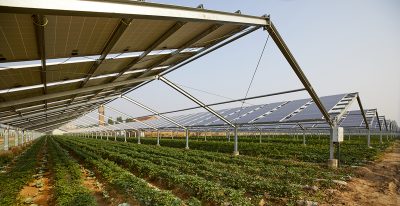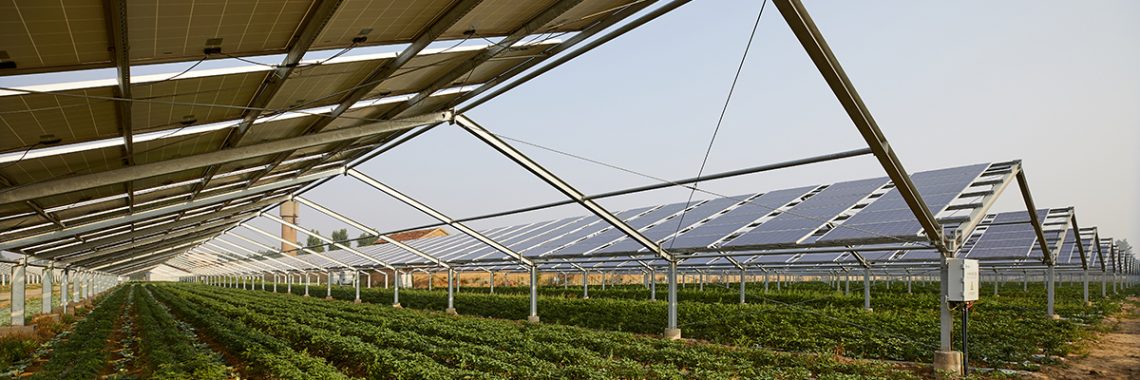Global electric energy demand could be met by converting just 1 percent of cropland to solar energy production, according to a recent study from Oregon State University.
Croplands in western America, southern Africa, and the Middle East have the highest potential for solar energy production based on solar efficiency (the ratio of solar power generated to solar radiation that hits the panels).
Solar arrays can help reduce temperature and light stress on some crops, provide shade for livestock, reduce evapotranspiration, and increase water use efficiency. And solar energy production is the most efficient when vegetation helps maintain a cooler microclimate around the panels.
Solar panel, crop efficiency needs similar

Solar panel efficiency depends on air temperature, wind speed, relative humidity, and insolation (the amount of solar radiation reaching the panels). Solar panels are most efficient where there is plenty of insolation, a light wind, moderate temperatures, and low humidity – the same conditions that favor most crops.
Like plants, solar panels can also get heat stress. As the temperature of a panel increases, solar efficiency decreases. Vegetation around solar panels helps keep the system cooler and allows for more efficient energy production.
While converting valuable cropland to solar generation may not make sense, combining the two to create an agrivoltaic system does. Research shows the largest benefit of agrivoltaic systems will likely be in water-limited areas. Solar panels can greatly reduce evapotranspiration and increase water use efficiency by shading the ground. In turn, crops growing under and around solar panels help reduce radiant heat and increase the system’s solar efficiency.
Studies show yields, water efficiency increase
Oregon State University researchers recently studied production and water use efficiency of grasses under a solar array in a sheep pasture. The solar array was 3.6 feet off the ground on the lowest side. They found that pasture biomass increased by 90 and 126 percent compared to the control (no solar panels), and water use efficiency increased by over 300 percent. Solar panels can also provide shade for livestock.
A University of Arizona research team grew peppers and tomatoes under a solar array 10 feet high. Jalapeno plants under the solar panels produced the same amount of fruit as the control plants, but water use efficiency went up by 157 percent. Tomato yield doubled under the solar panels, and water use efficiency increased by 65 percent.
Corn grown under a low-density solar array in Japan outperformed corn grown under control conditions by over 5 percent. Lettuce grown under solar panels in France maintained a comparable yield to the control treatment and had higher water use efficiency.
These studies help illustrate the potential for agrivoltaic systems and incorporating solar arrays into existing agricultural production systems across the west.
You can visit www.wyomingrenewables.org for more information about alternative energy in Wyoming. Please contact me at cyoungqu@uwyo.edu to receive copies of the studies referenced in this article.





